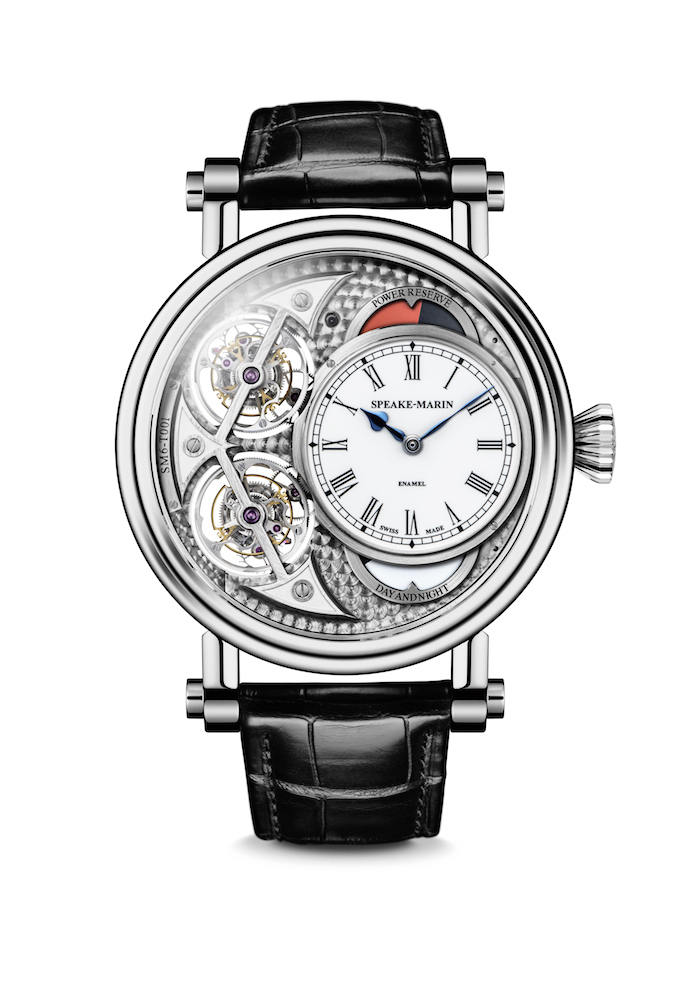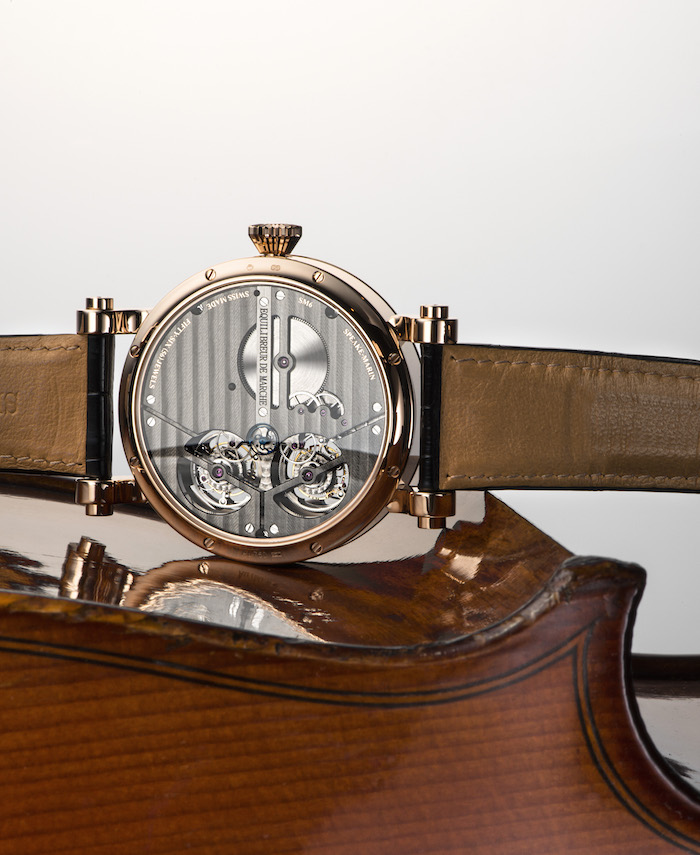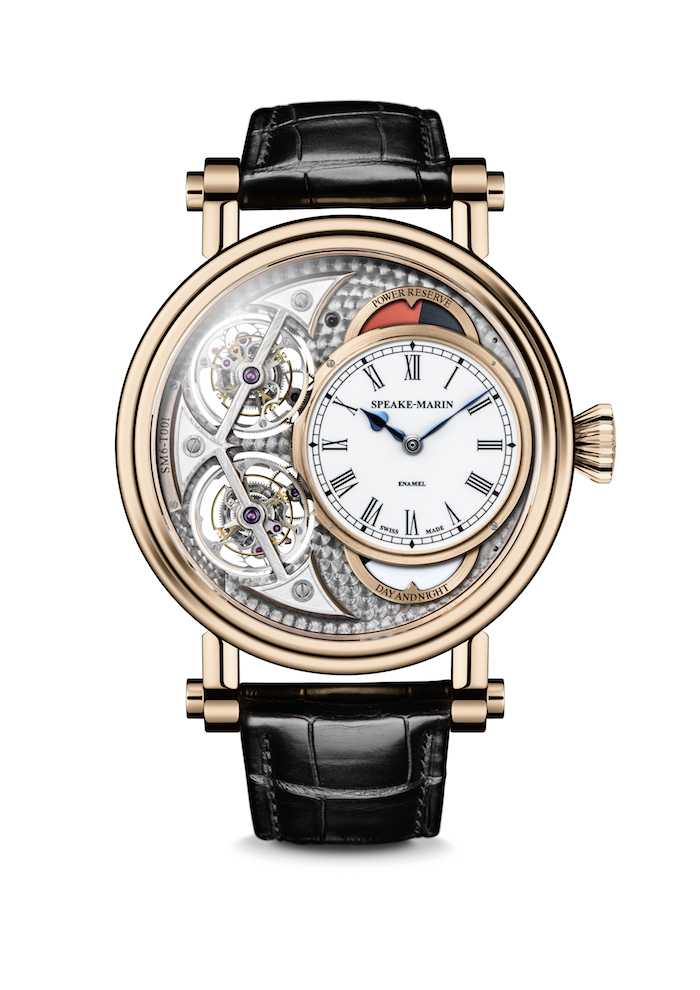Watching time can be mesmerizing, especially if you are wearing the right watch on your wrist. While not everyone is afforded the luxury of observing time ticking by, the imagery of such a quintessential element of life can be quite captivating. One of the distinct complications within horology that creates the visual effect of time and beauty is the tourbillon — an art mastered by independent watchmaker Peter Speake-Marin. His new Magister Vertical Double Tourbillon is a masterfully crafted work of art and precision.
Dial and Case work
This Magister Vertical Double Tourbillon is available in two different versions — each powered by the SM/CDH Calibre SM6. Both are done in a 46mm Piccadilly case in either 18K white gold or 18K rose gold and are covered by an anti-reflective sapphire crystal on the front and the back. The aesthetic design tells quite a story beginning with its white oven-fired enamel subdial displaying the hours and minutes with the brand’s signature blued-steel Foundation hands. The half-moon meter above the subdial indicates the power reserve (72 hours) left in the watch. Symmetry is known to be much more appealing to the eye, and in this case, Speake-Marin tastefully levels the business side of this watch with a second half-moon day/night meter underneath the sub-dial.
A Thing Of Beauty
The story continues to unfold as you move across to the double tourbillons. The two 60-second tourbillons in this case are quite spectacular for a variety of reasons. These synchronized complications are connected by a single bridge which is hand finished with mirror polished internal bevels. The vertical layout of these tourbillons is particularly precious as they remain true to the watch’s balanced symmetry. Both aesthetically and horologically speaking, it’s a feat in its own right. Mechanically speaking, each tourbillon works off its own gear train which is powered by its own mainspring barrel yet both are wound through the crown. For horological purposes the tourbillons are linked by a limited-slip gearbox (rate equalizer) which limits the effect of any bumps and variations that could impact the timeliness of the watch.
“The tourbillon is one of the things that I love most about watchmaking,” he says. “Not because of the precision it gives to the timekeeping, but because of the animation it gives to the dial. It shows time moving in a way that a minute-repeater or a grande sonnerie, for example, can’t offer. It’s something which, for me, is quite profound, illustrating the passing of time.”
Additional Features
The sapphire caseback allows you to peer through the sapphire crystal into the reverse side of the two tourbillons. The gears, silver bridges, and ruthenium plating are revealed. While not the kind of watch you would wear in the water, it is resistant up to 30 meters. Each version comes with an alligator leather strap with a buckle made of the proper color of gold to correspond with the case. Each side of this piece will catch the eye, it’s only a matter of time. The watch should retail for about $250,000 or so.










